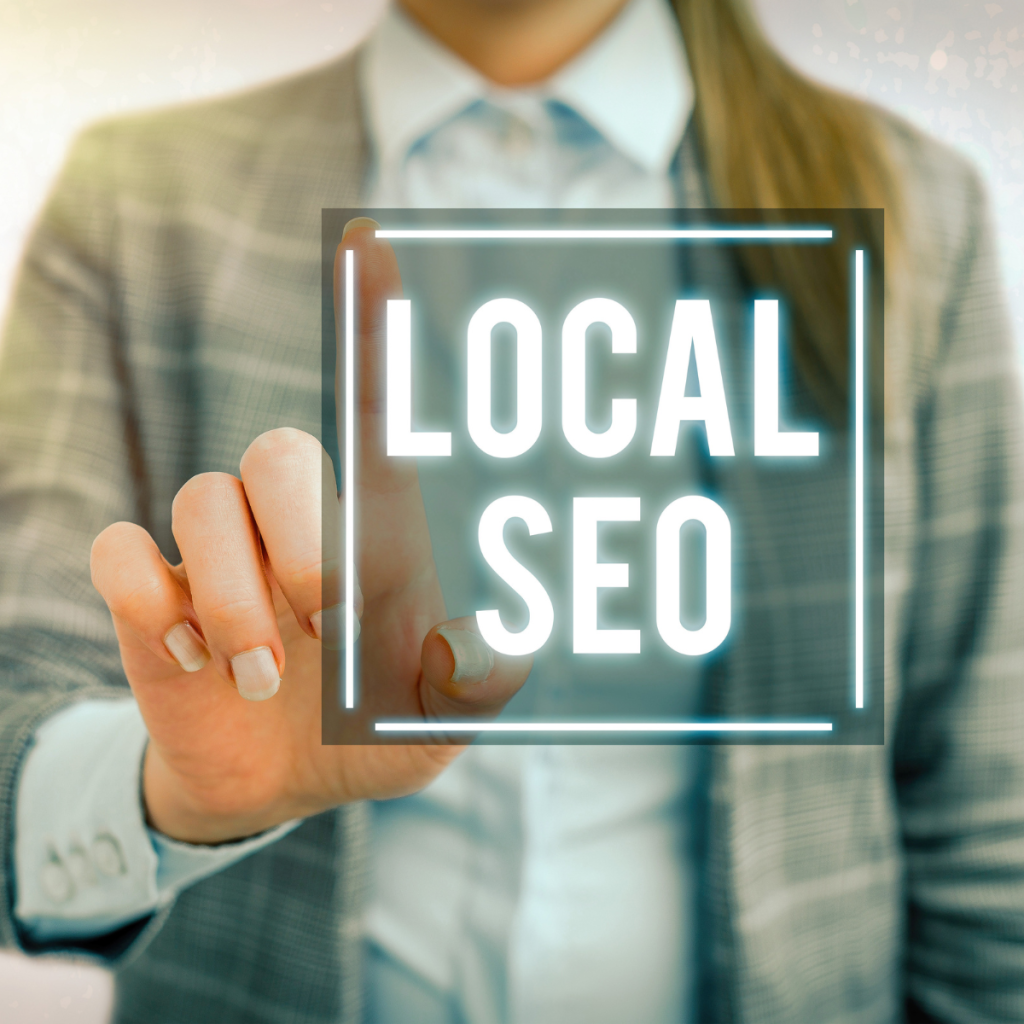Marketing is essential for trades and home service businesses looking to attract new customers and grow their revenue. This guide breaks down the different marketing tactics available, categorized to help you choose the best path for your business.
Digital Marketing
Digital marketing uses the internet to reach customers. It includes websites, social media, and online ads.
When to Use: Digital marketing is best if your customers search online before hiring a service. If you want to attract new customers who use Google, Facebook, or Instagram, digital marketing is a great option. It is also useful for reaching a wider audience beyond your immediate local area.

Digital Marketing Tactics
Search Engine Optimisation (SEO)
Optimising your website for search engines to rank higher for local service-related keywords.
For example: Targeting phrases like “emergency plumber in Sydney” or “affordable electricians near me” to attract potential customers actively searching for your services.
- Skill Level Required: High
- Pros: Cost-effective over time, builds credibility, attracts organic traffic.
- Cons: Takes time to see results, requires ongoing effort, dependent on search engine algorithm changes.
Pay per Click Ads (PPC)
Targeting people searching for your services with Google Ads and Bing Ads.
Example: Running an ad campaign for “same-day AC repair” during peak summer months.
- Skill Level Required: High
- Pros: Immediate visibility, highly targeted, measurable results.
- Cons: Can be expensive, requires expertise, stops working when the budget runs out.
Paid Social Ads
Running targeted ads on platforms like Facebook, Instagram, and LinkedIn.
Example: Promoting a discount on pest control services to homeowners in specific suburbs.
- Skill Level Required: High
- Pros: Broad reach, excellent for targeting specific demographics, drives brand awareness.
- Cons: Ad fatigue can occur, requires constant monitoring, competitive ad space.
Social Media Marketing
Posting engaging content and building a loyal audience across social platforms.
Example: Sharing time-lapse videos of renovations or “before and after” photos of completed projects.
- Skill Level Required: Medium
- Pros: Builds relationships with customers, cost-effective, encourages sharing and engagement.
- Cons: Time-intensive, requires consistent content creation, results can be unpredictable.
Email Marketing
Sending regular updates and promotions to past and potential customers.
Example: A monthly newsletter featuring seasonal maintenance tips and exclusive offers.
- Skill Level Required: Medium
- Pros: Direct communication, measurable ROI, excellent for retention.
- Cons: Can feel intrusive if not done right, risk of spam filters, requires a good contact list.
Lead Selling Sites
Leveraging third-party platforms like HiPages, Oneflare, and ServiceSeeking to generate leads.
Example: Using HiPages to connect with homeowners seeking immediate plumbing repairs.
- Skill Level Required: Low
- Pros: Ready-made leads, quick start, no need to build your own platform.
- Cons: High competition, cost per lead can be high, and quality of leads may vary.
Offline Marketing
Offline marketing helps you reach people without using the internet. It includes old-school marketing channels like newspapers, radio, TV, flyers, and billboards.
When to Use: If you serve a specific area and want to attract customers nearby, offline marketing is a strong choice. It works well for businesses that benefit from word-of-mouth, local branding, or targeting older audiences who consume traditional media.

Offline Marketing Tactics
Direct Mail Flyers & Magnets: Reaching potential customers through localised mail campaigns.
Example: Distributing fridge magnets with your contact details to every home in a specific area.
- Skill Level Required: Low
- Pros: Tangible, highly targeted, good for local marketing.
- Cons: Can be seen as junk mail, printing and distribution costs, low response rates.
TV Advertising (including Catch-Up TV)
Running targeted ads on television and streaming platforms.
Example: Airing a commercial during a popular renovation show to showcase your carpentry services.
- Skill Level Required: High
- Pros: Wide reach, builds trust, great for showcasing services visually.
- Cons: Expensive, difficult to measure ROI, not ideal for smaller budgets.
Radio Advertising
Promoting your services through local and national radio stations.
Example: Running an ad campaign during morning commutes highlighting your “24/7 emergency
services.”
- Skill Level Required: Medium
- Pros: Local targeting, affordable compared to TV, repetitive messaging builds recall.
- Cons: Limited to audio, declining audience, may not reach your target demographic.
Newspapers (Local & Metro)
Running ads in print media to capture a local audience.
Example: A full-page ad in the local paper featuring a promotion on air conditioning installations.
- Skill Level Required: Medium
- Pros: Good for local visibility, tangible format, trusted medium.
- Cons: Declining readership, short shelf life, expensive for prominent placement.
Outdoor Advertising
Using billboards, buses, and other public displays to increase brand awareness.
Example: A large roadside billboard showcasing your “No Call-Out Fee” offer for plumbing services.
- Skill Level Required: Medium
- Pros: High visibility, broad reach, 24/7 exposure.
- Cons: High cost, difficult to measure effectiveness, limited targeting options.
Local SEO
Local SEO focuses on improving your visibility in search engine results for location-based queries.
When to Use: If most of your customers come from your local area, you need strong local SEO. This is essential for service businesses like plumbers, electricians, and cleaners because people usually search for these services near their home.

Local SEO Tactics
Google Business Profile Optimisation
Ensuring your business appears in local search results with a fully optimised profile.
Example: Adding photos of your team, showcasing completed projects, and encouraging reviews.
- Skill Level Required: Medium
- Pros: Boosts local visibility, free to set up, easy for customers to find you.
- Cons: Requires ongoing management, competitive for certain keywords, reliant on Google’s algorithm.
Local Citations & Directory Listings
Getting listed in reputable directories like Yellow Pages, True Local, and hipages.
Example: Claiming and verifying listings on platforms like Yelp and Hotfrog.
- Skill Level Required: Low
- Pros: Improves local search rankings, establishes credibility, affordable.
- Cons: Time-consuming to manage, risk of outdated information, quality of directories varies.
Barnacle SEO
Leveraging high-ranking platforms (like ServiceSeeking or Oneflare) to improve visibility.
Example: Posting detailed service offerings on Oneflare to attract potential leads.
- Skill Level Required: Medium
- Pros: Leverages high-ranking platforms, enhances visibility, can bring quick results.
- Cons: Dependent on third-party platforms, less control over content, may dilute brand identity.
Google Reviews & Reputation Management
Encouraging satisfied customers to leave reviews and managing your online reputation.
Example: Sending follow-up emails with direct links to your Google review page.
- Skill Level Required: Low
- Pros: Builds trust, improves local rankings, encourages customer engagement.
- Cons: Risk of negative reviews, time-intensive to monitor, requires follow-up with customers.
Hyperlocal Content Creation
Writing blog posts or creating videos targeting specific neighbourhoods or suburbs.
Example: “5 Reasons to Upgrade Your Electrical System in [Suburb Name].”
- Skill Level Required: Medium
- Pros: Builds local authority, attracts niche traffic, complements SEO efforts.
- Cons: Requires creative effort, limited reach without promotion, takes time to see results.
Direct Selling
Direct selling means talking to customers one-on-one. It includes phone calls, emails, and visiting homes or businesses.
When to Use: If you provide high-value services or work in industries where customers need personal trust (like home renovations or B2B services), direct selling is effective. It also works well when you need to follow up with leads and close sales quickly.

Direct Selling Tactics
Phone Sales
Calling potential customers to generate leads and close sales.
Example: Contacting homeowners after storms to offer emergency roof repairs.
- Skill Level Required: Medium
- Pros: Direct interaction, immediate feedback, personal touch.
- Cons: Can be intrusive, time-intensive, low success rates if not targeted.
Email Outreach
Sending targeted emails to potential customers and business partners.
Example: Introducing your services to property managers through personalised email campaigns.
- Skill Level Required: Medium
- Pros: Cost-effective, scalable, easy to track.
- Cons: Risk of being marked as spam, requires good list management, lower response rates.
Face to Face & Door-to-Door Sales
Engaging with customers directly in their homes or workplaces.
Example: Offering a special discount to homeowners during a door-to-door campaign in new housing developments.
- Skill Level Required: High
- Pros: Builds trust, allows for direct persuasion, personal touch.
- Cons: Time-consuming, limited reach, requires training.
LinkedIn Outreach
Networking with potential clients and partners through LinkedIn messages and connections.
Example: Reaching out to construction companies to offer subcontracting services.
- Skill Level Required: Medium
- Pros: Professional network access, highly targeted, builds credibility.
- Cons: Time-intensive, requires consistent follow-up, risk of being perceived as spammy.
Local Community Events
Hosting or participating in local events to meet potential customers face-to-face.
Example: Setting up a booth at a community fair to showcase your services.
- Skill Level Required: Low
- Pros: Builds local presence, fosters trust, creates networking opportunities.
- Cons: Requires event preparation, may have limited direct ROI, dependent on event attendance.
Branding
Branding makes your business look professional and easy to remember. It includes logos, uniforms, and signs.
When to Use: If you want to stand out in a crowded market or build a strong reputation over time, branding is important. It’s useful for businesses that rely on repeat customers, referrals, or strong visual recognition in their community.

Branding Tactics
Vehicle Wraps
Turning your vehicles into mobile advertisements with eye-catching designs and your contact information.
Example: A brightly colored van promoting “24/7 Plumbing Services” with a call-to-action phone number.
- Skill Level Required: Medium
- Pros: High visibility, mobile marketing, reinforces brand identity.
- Cons: Upfront cost, requires professional design, may need updates over time.
Staff Uniforms
Providing branded uniforms for your team to wear on the job.
Example: Polo shirts with your company’s logo and a tagline like “Your Trusted Local Electrician.”
- Skill Level Required: Low
- Pros: Builds professionalism, boosts brand recognition, creates a cohesive team appearance.
- Cons: Initial cost, requires regular maintenance, limited impact outside of work environments.
Shopfronts, offices and factories
Using your physical location to showcase your brand with signage and visual appeal.
Example: A storefront with a bright sign and a window display of your services or testimonials.
- Skill Level Required: Medium
- Pros: Increases walk-in traffic, reinforces trust, creates a professional image.
- Cons: Limited to your location, costs for signage and upkeep, dependent on foot traffic.
Promotional Merchandise
Giving away branded items like pens, calendars, or reusable bags.
Example: Distributing branded keychains at local events.
- Skill Level Required: Low
- Pros: Builds goodwill, increases brand exposure, cost-effective for giveaways.
- Cons: Limited reach, requires initial investment, effectiveness varies.
Next Steps: Implementing the Right Marketing Mix
Not all tactics will be suitable for every business. The key is to test, track, and refine your approach to find the best-performing strategies.
Need expert help? Book a marketing strategy consultation here ->

